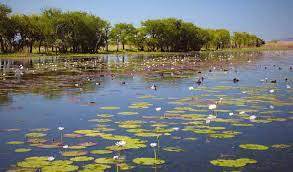Bhindawas Wildlife Sanctuary and Sultanpur National Park in Haryana, as well as Thol Lake Wildlife Sanctuary and Wadhvana Wetland in Gujarat, earned the classification.
Four new wetlands in India have been designated as Ramsar sites
of international importance – two in Haryana and two in
Gujarat – bringing the total number of such sites in the nation to forty- six, and area of 1,083,322 hectares. The Ramsar list aims to protect a transnational network of wetlands that are critical to the survival of biological variety.

Bhindawas Wildlife Sanctuary and Sultanpur National Park in Haryana, as well as
Thol Lake Wildlife Sanctuary and Wadhvana Wetland in Gujarat, earned the classification. While these are the first two wetlands in Haryana to be designated as
Ramsar sites, Gujarat's Nalsarovar Bird Sanctuary received the designation in 2012. The state of
Uttar Pradesh
may have the most marshes, with 8 declared as wetlands. The convention is an intergovernmental pact that establishes a framework for national and international action to conserve and wisely use wetlands and their resources.
The news comes as India takes over as chair of the United Nations' Committee on the Conservation of Migratory Species of Wild Animals (CMS), with the
Indian government leading transboundary cooperation to secure the
Central Asian Flyway. The Bhindawas
Wildlife Sanctuary is the largest human-made freshwater wetland in Haryana. Around 250 bird species utilize the refuge as a feeding and roosting location year-round. More than 10 globally critically endangered species consider the area home, including the rare Egyptian Vulture, Steppe Eagle, Pallas's Fish Eagle, and Black-bellied Tern.